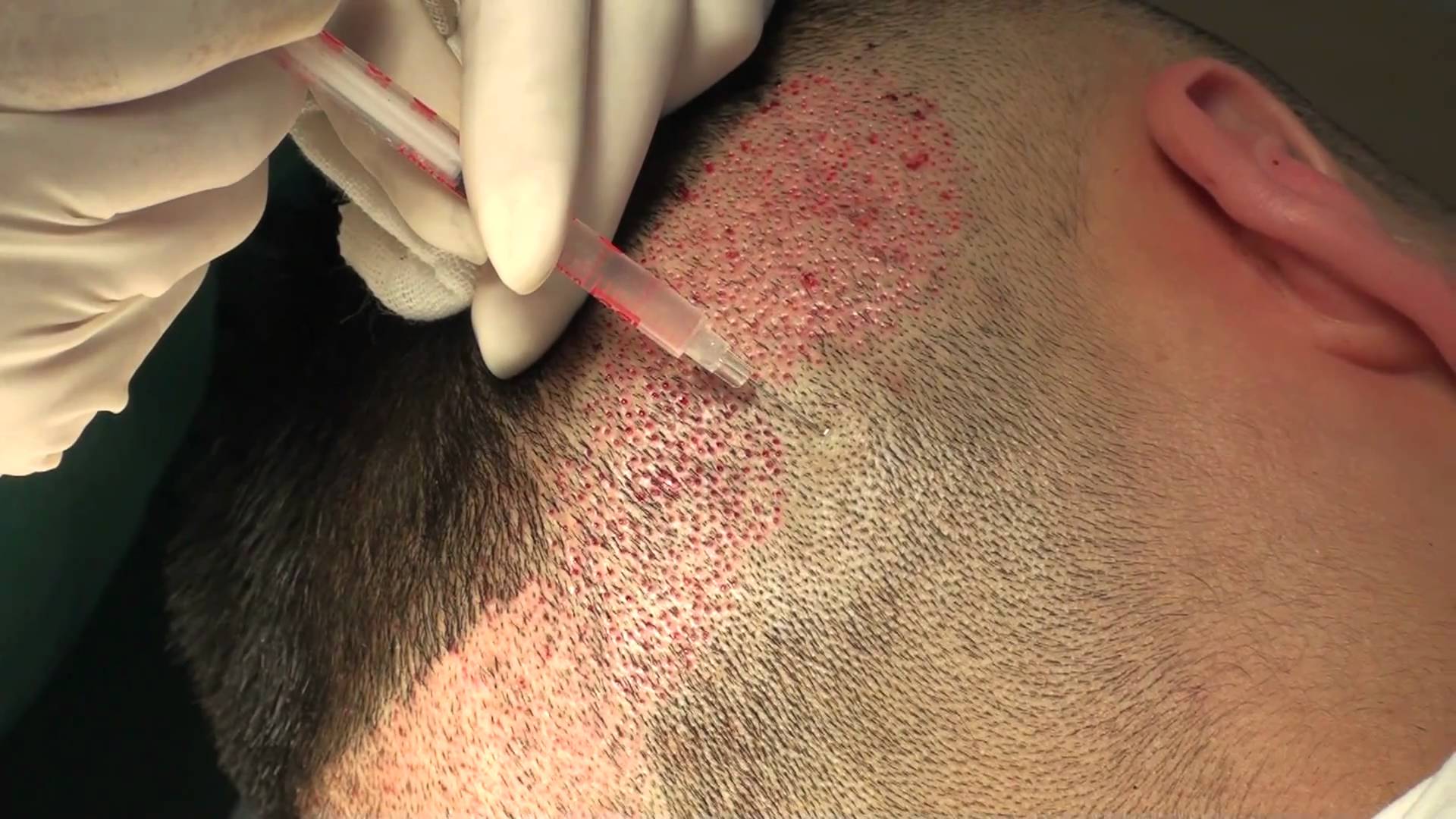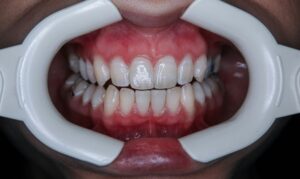Hair transplant surgery is a transformative procedure for many individuals looking to restore their hairline and confidence. While the surgery itself is a significant milestone, the recovery process is equally crucial for achieving the desired results. Understanding what to expect during the recovery period helps set realistic expectations and ensures you can care for your scalp effectively.
In this article, we will cover 12 key aspects of the hair transplant recovery process, offering insights into what happens at each stage and how to navigate it successfully.
1. Immediate Post-Surgery Effects
Immediately following your hair transplant procedure, you will notice visible signs of the surgery on your scalp. The recipient area, where the grafts were implanted, may appear red and dotted with tiny scabs. The donor area, where hair follicles were extracted, might have stitches or small, linear scars, depending on the technique used. Additionally, swelling and mild tenderness are common in both areas.
These post-surgery effects are natural and indicate the healing process has begun. While they may be concerning at first glance, they typically subside within a week to 10 days. During this time, it’s crucial to follow your surgeon’s instructions to avoid complications. Avoid touching, scratching, or picking at the treated areas, as this can dislodge the grafts or introduce bacteria, increasing the risk of infection. Keeping the scalp clean as per your doctor’s recommendations and avoiding harsh chemicals or excessive moisture is essential for optimal healing.
2. Swelling
Swelling is a common occurrence after a hair transplant and usually develops in the forehead and around the eyes. It’s a result of the body’s inflammatory response to the surgical trauma and fluid retention during the procedure. Swelling typically begins within 24–48 hours post-surgery, peaks around the third or fourth day, and then gradually subsides by the end of the first week.
To minimize swelling, your surgeon may recommend sleeping with your head elevated using extra pillows or a recliner. Applying a cold compress gently to your forehead (avoiding the transplanted area) can also help reduce inflammation. In some cases, you may be prescribed anti-inflammatory medications to manage swelling. While it may be uncomfortable, rest assured that swelling is temporary and part of the normal healing process.
3. Scabbing and Crusting
After the hair follicles are transplanted, small scabs form around the graft sites as the skin heals. These scabs serve as a protective layer, shielding the grafts from external contaminants while promoting tissue regeneration. Scabbing typically begins a day or two after the procedure and lasts about 7–10 days.
It’s important to resist the urge to scratch or pick at these scabs, as doing so can damage the newly implanted follicles and compromise the results. Your surgeon will likely recommend a gentle washing routine using a mild shampoo to help soften the scabs and allow them to fall off naturally. Following this advice ensures that the grafts remain secure during this critical early stage of recovery.
4. Itching
Itching is a common sign of healing and can occur in both the donor and recipient areas. Typically beginning a few days post-surgery, it may last for up to two weeks. While itching is a positive indicator that your scalp is recovering, it can also be a source of frustration if not managed properly.
To alleviate itching, avoid scratching, as this can disrupt the healing process or dislodge grafts. Instead, keep the scalp hydrated by following your doctor’s recommendations, which may include using a medicated spray or moisturizer. If the itching becomes severe, consult your surgeon, who might prescribe antihistamines or topical creams to provide relief.
5. Shedding of Transplanted Hairs
Around 2–4 weeks after the procedure, you may notice the transplanted hairs beginning to shed. This phenomenon, known as “shock loss,” is a normal and expected part of the recovery process. While it might feel disheartening, shedding is not a sign of failure but rather an indication that the hair follicles are adapting to their new environment.
During this phase, the hair shafts are shed while the follicles remain intact beneath the scalp. This process allows the follicles to enter a new growth cycle, paving the way for fresh, healthy hairs to emerge in the coming months. It’s essential to stay patient and trust the process, as regrowth typically begins around the three-month mark.
6. New Hair Growth
New hair growth is one of the most anticipated milestones of the recovery process. Around three months after the surgery, you’ll begin to notice fine, thin hairs emerging from the transplanted follicles. Over time, these hairs will thicken, darken, and grow longer, gradually blending with your natural hair.
The growth process varies from person to person, but most patients see noticeable results by the six-month mark. By 9–12 months, the majority of the transplanted hairs will have grown in, and the final outcome is typically visible within 12–18 months. During this time, maintaining a healthy scalp environment through proper care and nutrition is crucial to support consistent growth.
7. Sensitivity in the Scalp
After a hair transplant, you may experience sensitivity, tightness, or numbness in the treated areas. These sensations occur because the surgery impacts the nerves in the scalp, which take time to regenerate. While sensitivity usually peaks during the first week, it can persist at lower levels for several weeks or even months.
To manage sensitivity, follow your surgeon’s post-operative care instructions, including avoiding tight hats, vigorous scalp massages, or direct sunlight. Over-the-counter pain relievers or topical numbing agents may also be recommended for temporary relief. Rest assured, as the nerves heal, these sensations will diminish, allowing you to feel more comfortable over time.
8. Changes in Hair Texture
It’s common for the newly transplanted hairs to initially have a different texture than your existing hair. They may appear coarse, wiry, or uneven, which can be surprising at first. This change is temporary and occurs as the follicles establish themselves in the recipient area.
Over time, the hair texture will normalize, blending seamlessly with your natural hair. To support this process, avoid over-styling or using harsh chemical treatments during the early stages of recovery. Be patient, as these changes are part of the natural progression toward achieving a full, healthy head of hair.
9. Lifestyle Adjustments
The recovery period requires certain lifestyle changes to protect the grafts and ensure optimal healing. Strenuous activities, such as heavy lifting or intense exercise, should be avoided for at least two weeks to prevent excessive sweating or increased blood flow to the scalp, which can disrupt the grafts.
Exposure to direct sunlight should also be minimized during the first month, as UV rays can damage the healing skin. Wearing a loose, breathable hat can provide protection when outdoors. Additionally, refrain from smoking and alcohol consumption, as these can impair blood circulation and slow down the healing process.
10. Emotional Ups and Downs
The recovery process can be an emotional rollercoaster, especially during the early weeks when swelling, scabbing, and shedding may leave you feeling self-conscious. It’s normal to experience a mix of excitement, impatience, and even doubt as you await visible results.
To navigate these emotional ups and downs, remind yourself that recovery is a gradual process and focus on the long-term outcome. Connecting with others who have undergone hair transplants or seeking support from your surgeon can provide reassurance and perspective.
11. Follow-Up Appointments
Regular follow-up appointments with your surgeon are critical to ensuring a successful recovery. These visits allow your doctor to monitor your progress, address any concerns, and provide personalized advice on post-operative care.
Your surgeon may also recommend hair growth products or treatments, such as minoxidil or platelet-rich plasma (PRP) therapy, to enhance the results of your transplant. Attending all scheduled appointments demonstrates your commitment to achieving the best possible outcome.
12. Long-Term Care and Maintenance
Once the recovery period is complete, maintaining the health of your transplanted and natural hair is essential for long-lasting results. Adopt a gentle hair care routine that includes mild shampoos and conditioners, and avoid harsh chemical treatments or excessive heat styling.
A balanced diet rich in vitamins and minerals, such as biotin, zinc, and omega-3 fatty acids, can also promote healthy hair growth. Additionally, follow any specific recommendations from your surgeon regarding hair care products or treatments to optimize your results over time.
Conclusion
Recovering from a hair transplant is a journey that requires patience, care, and a commitment to following your surgeon’s instructions. While the process involves several stages—from immediate post-surgery effects to the gradual growth of new hair—the final results are worth the effort.
Understanding what to expect at each stage helps you navigate the recovery process with confidence, ensuring that you achieve the best possible outcome. By prioritizing proper care, maintaining realistic expectations, and staying connected with your medical team, you can look forward to a restored hairline and renewed self-esteem.




